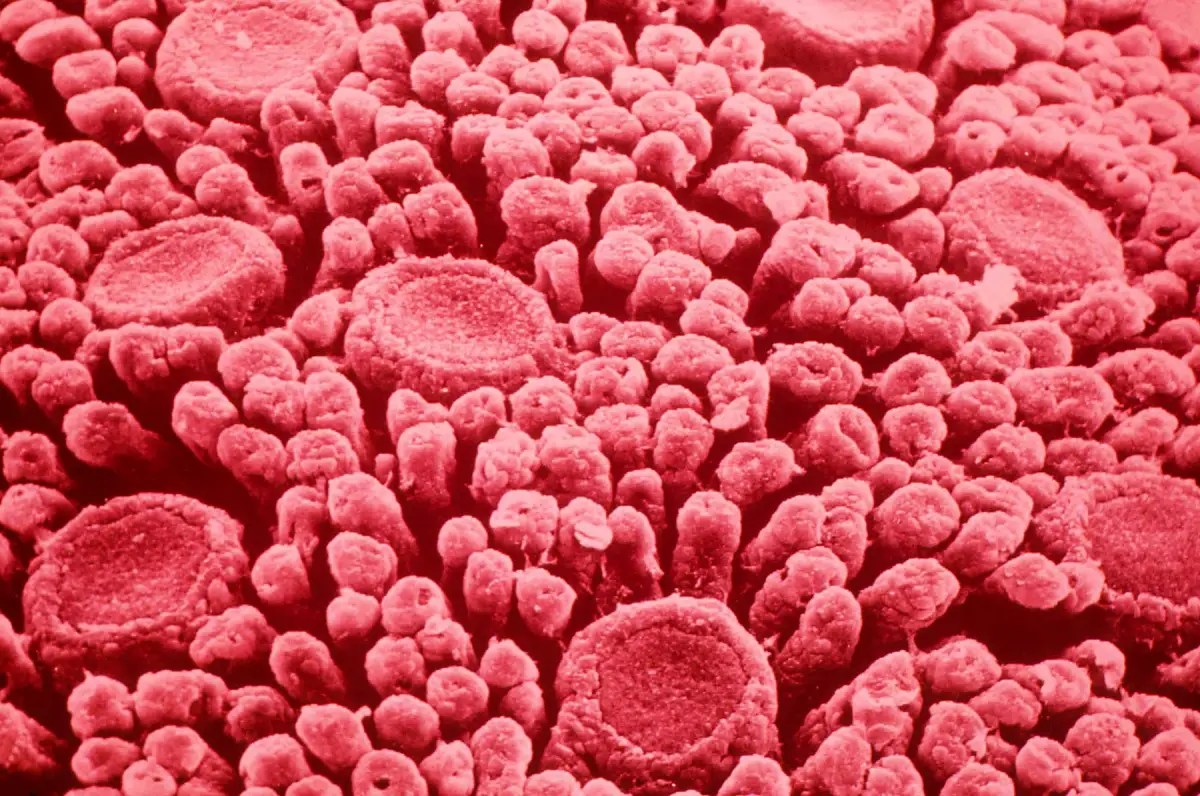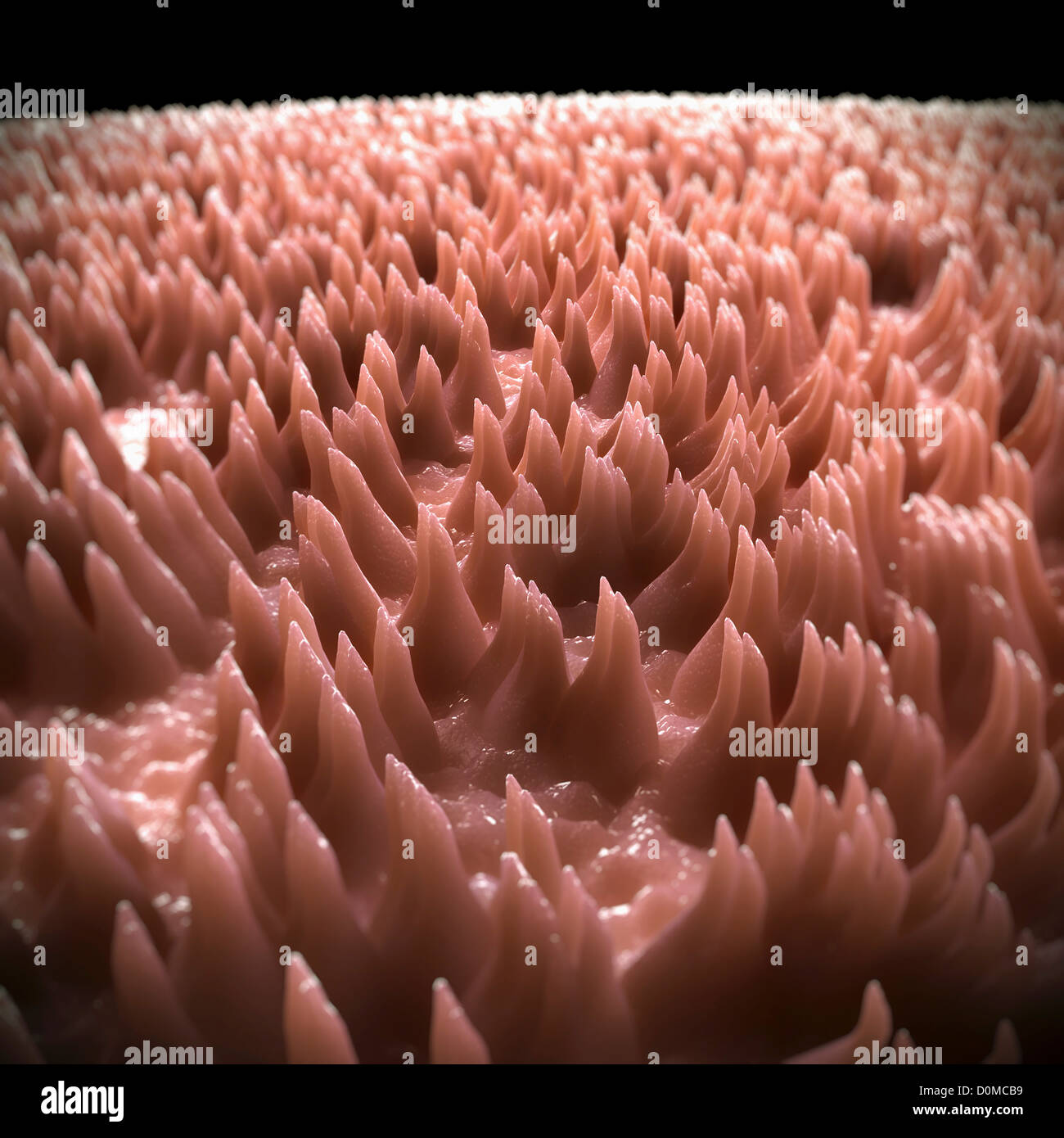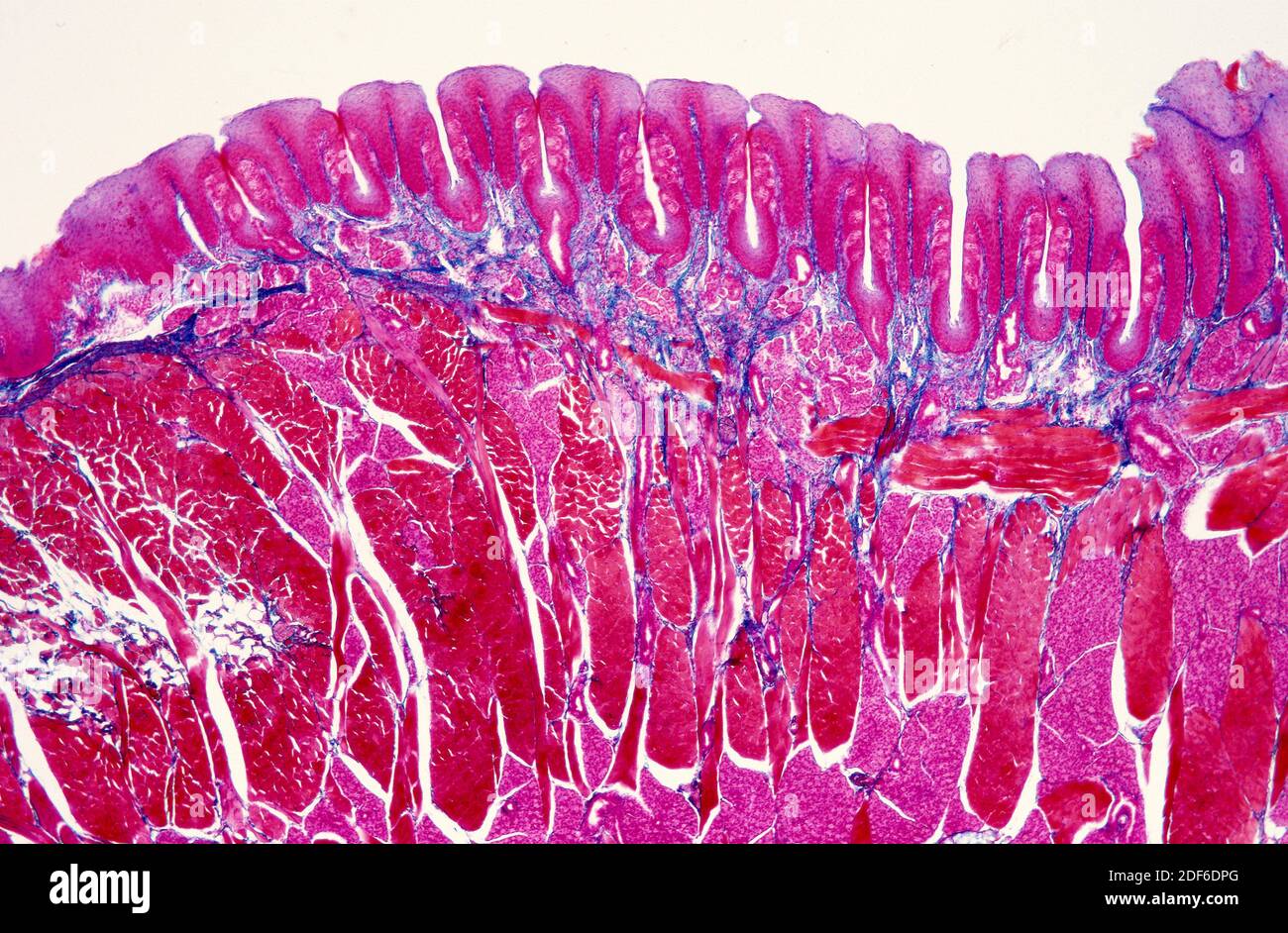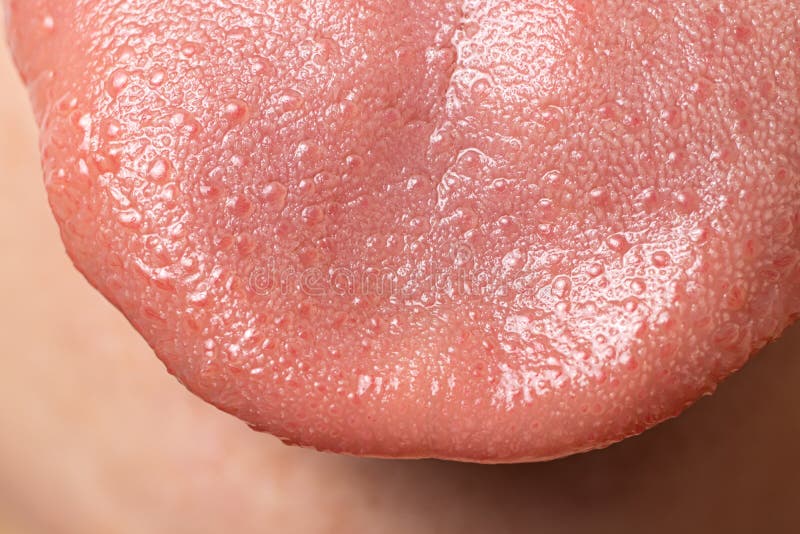
New Study Finds Sixth Taste Bud on Tongue InsideHook
Microscope picture of microbes on a human tongue. Each small dot shows a bacterial cell and the colors indicate different types of bacteria. The wide gray stripe at the core comes from human tongue cells. Credits: Steven Wilbert and Gary Borisy, The Forsyth Institute https://doi.org/10.25250/thescbr.brk510

Papillae tongue Banque de photographies et d’images à haute résolution
In this video, you will see what the mouth (lip, cheeks, underneath lip, tongue, roof of the mouth, teeth, and gum) looks like using a microscope.

Tongue Human tongue, Things under a microscope, Microscopic photography
The tongue is a mass of interlacing skeletal muscle , connective tissue with some mucous and serous glands, and pockets of adipose tissue, covered in oral mucosa. A V-shaped line (shallow groove)- the sulcus terminalis, divides the tongue into an anterior 2/3 and a posterior 1/3.

Human tongue under a microscope! r/pics
3 min read Image Source © 2014 WebMD, LLC. All rights reserved. The tongue is a muscular organ in the mouth. The tongue is covered with moist, pink tissue called mucosa. Tiny bumps called.

Human Tongue, Fungiform Papillae, sec., 7 µm, H&E Microscope Slide
Tongue Taste Buds under the Microscope. A taste bud is a small organ located on the tongue in terrestrial vertebrates that functions in the perception of taste. In fish, taste buds occur on the lips, the flanks, and the caudal (tail) fins of some species and on the barbels of catfish. Taste receptor cells, with which incoming chemicals from.

Human tongue cross section with taste buds or gustatory cells. Optical
Myriad microbes dwell on human tongues — and scientists have now gotten a glimpse at the neighborhoods that bacteria build for themselves. Bacteria grow in thick films, with different types of.

MEDICAL SCIENCE on Twitter Things under a microscope, Human tongue
To study the dorsal surface of the human tongue using a scanning electron microscopy (SEM), tissue specimens were taken from the anterior part of the tongues of 15 individuals aged from 21- to 28-years-old. The formalin-fixed samples were processed routinely for SEM. With SEM the surface of the normal tongue mucosa was shown to be rather evenly.

snail's tongue under the microscope a photo on Flickriver
Free Shipping Available. Buy on eBay. Money Back Guarantee!

Tongue Bacteria by Steve Gschmeissner in 2022 Scanning electron
Reading time: 38 minutes Recommended video: Structure of the tongue [08:40] Overview of the structure of the tongue seen from the cranial view of the dorsum. Tongue Lingua 1/5 Synonyms: none The world is riddled with numerous stimuli that living organisms interact with every day.
Under the microscope I Can Has Cheezburger?
Fig. 4 A, B and C present example in mouth fluorescent mode micrographs of human tongue surface after consumption of 20 ml of the different emulsions stabilized by cationic lactoferrin, non-ionic Tween 80 and anionic β-lactoglobulin. The utility of the oral microscope is immediately apparent when looking at the three figures, not only are the.

Electron Microscope Photography Cat bat human tongue Microscopic
tongue contains numerous small projections called papillae. There are three distinct types of papilla which vary in distribution over the dorsal surface of the tongue. While they are visible with the unaided eye, their structures can be seen clearly only with the microscope. Filiform papillae: the most numerous

Human tongue stock image. Image of body, mouths, tongue 36074765
The tongue under a microscope shows a core of crisscrossing skeletal muscle bundles and a peripheral mucous membrane. A stratified squamous epithelium covers the mucous membrane of the tongue and contains 4 types of papillae. Again, each tongue papilla possesses a connective tissue core that covers the epithelium.

Tongue bacteria, SEM Microscopic photography, Scanning electron
Phase Contrast Image Gallery Human Tongue. A stained thin section of human tongue tissue is illustrated in the photomicrograph presented below. As evidenced by the micrograph, combining phase contrast microscopy with classical histological staining techniques in pathological research often yields enhancement of cellular features.

Human Tongue, Filiform Papillae, sec., 7 µm, H&E Microscope Slide
The tongue is a muscular organ in the mouth of a typical tetrapod.It manipulates food for chewing and swallowing as part of the digestive process, and is the primary organ of taste.The tongue's upper surface (dorsum) is covered by taste buds housed in numerous lingual papillae.It is sensitive and kept moist by saliva and is richly supplied with nerves and blood vessels.

Tongue Surface Human tongue, Things under a microscope, Microscopic
On our channel we will show you everything that surrounds us under a microscope.An approximate list of what we will consider:- Human tongue under the Microsc.

Tongue Surface by Clouds Hill Imaging Ltd/science Photo Library in 2020
Human tongue covered with filiform papillae GARY BORISY Using 17 fluorescent probes—each targeting only one particular genus of bacteria, and each glowing with a unique color—the research team could then see under a microscope how the genera were distributed. Rather than a rainbow sprinkled across the sample, the fluorescent probes segregated into visually apparent domains.